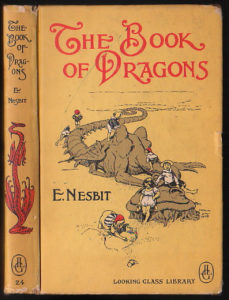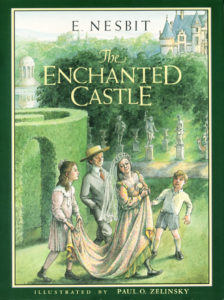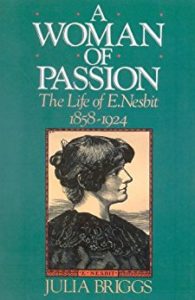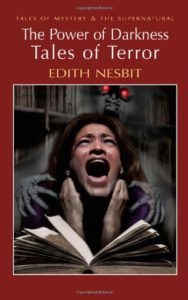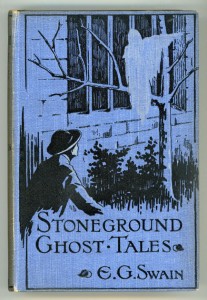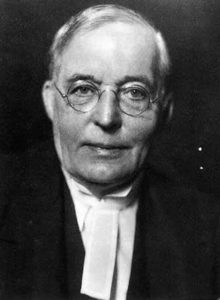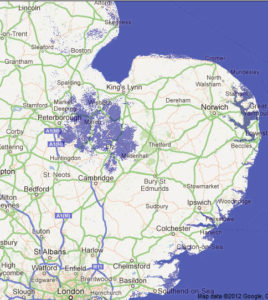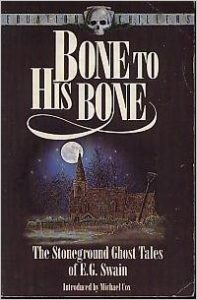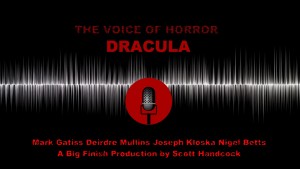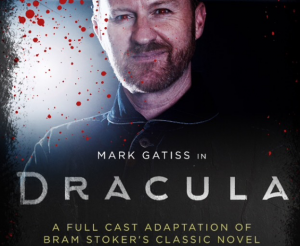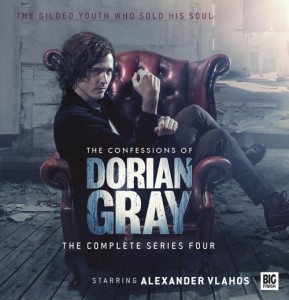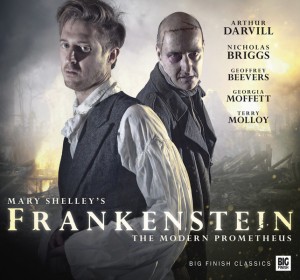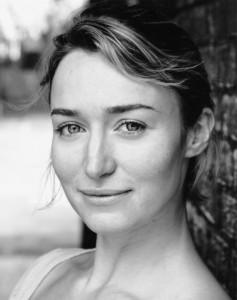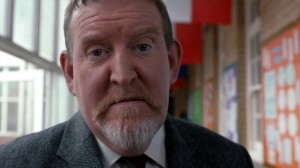Do you remember those heady days of 1893, dear listener? We laughed, we shared brandy by the Seine, and you were sick in a gendarme’s hat. We snuggled close and read E Nesbit’s scary tales, and then we thought, ‘Wait a minute, this is a woman. Damned cheek, coming over here and writing supernatural fiction, putting struggling male writers out of a job.’
Later that year, the First Matabele War started in South Africa, so we went back to knitting socks for the missionaries. But today, in honour of Women in Horror month, we open E Nesbit once again…
There are some cracking female horror writers around at the moment. However, we’ve been meaning to write about E Nesbit since last September, so what better time to get our act together? Our main interest is her horror stories, but a little background would not go amiss.
Edith Nesbit (1858-1924) was a typical British housewife of her time. Oh, apart from:
- Her friendship with Kropotkin, the Russian anarchist dissident
- The fact that she adopted two children fathered by her first husband, and let the mother live with them as secretary
- Her Marxist-socialist beliefs and involvement in founding the Fabian Society
- The seventy or eighty books she wrote or co-wrote
- Her political lecture tours, which included the London School of Economics
Strange, then, that nowadays she is best known as a children’s author, the woman who wrote The Railway Children, The Five Children and It, the Bastable series and The Enchanted Castle.
Not that these have been without influence. Her children’s stories are referenced in C S Lewis’s Narnia series; Noel Coward and J B Priestley both admired her work.
Gore Vidal wrote in the New York Review of Books, in 1964:
“There are those who consider The Enchanted Castle Nesbit’s best book. J. B. Priestley has made a good case for it, and there is something strange about the book which sets it off from the bright world of the early stories. Four children encounter magic in the gardens of a great deserted house. The mood is midnight. Statues of dinosaurs come alive in the moonlight, the gods of Olympus hold a revel, Pan’s song is heard. Then things go inexplicably wrong. The children decide to give a play. Wanting an audience, they create a number of creatures out of old clothes, pillows, brooms, umbrellas. To their horror, as the curtain falls, there is a ghastly applause. The creatures have come alive, and they prove to be most disagreeable.”
(Yalding Towers, incidentally, from the Enchanted Castle, is a setting in Alan Moore’s League of Extraordinary Gentlemen.)
Her approach to writing children was less sentimental than many, making her legacy more important. Some call her the first of the modern children’s fantasists, escaping the twee or moral tales of earlier Victorian writers.
As a result, adaptations and derivations continued long after her death. The Psammead stories are well known. Jenny Agutter’s career (see also further down) was boosted by her performances in two adaptations of The Railway Children (1968 and 1970), which allowed her to have less clothes on in Walkabout (1971) and Logan’s Run (1976). These latter two films certainly influenced many teenagers. Ahem.
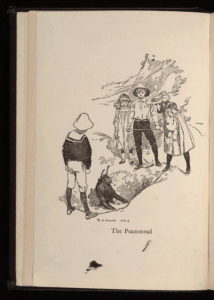
And Michael Moorcock wrote a series of books with an adult Oswald Bastable (The Warlord of the Air, The Land Leviathan, The Steel Tsar), drawing partially on Nesbit’s Fabian views of where the British Empire should be going.
The Scary Side
But to our point. E Nesbit wrote four collections of ghost or supernatural tales. Something Wrong (1893), Grim Tales (1893), Tales Told in the Twilight (1897) and Fear (1910). Naomi Alderman wrote, of Nesbit’s ghost stories
“There is darkness in the corners of these stories, like that gathering shadow – ordinary callousness turning into something more disturbing.”
Guardian Arts (2016)
We admit that her ghost stories are variable. Some contain musings which could have been left out, others evoke a worrying mood but don’t exactly scare. However, when she gets it right, she is excellent, with a less ‘period’ style than some of her contemporaries. She can be truly chilling.
She evokes images of the dead who are determined (or cursed) to keep going long after the grave has beckoned. And when we say images, we mean not only intangible revenants but corporeal forms. In fact, she has a penchant for all-too corporeal returns, which places her most definitely in the horror genre.
Many tales involve love and failed relationships, which is worth a note, given the author’s own experiences. Despite her political credentials, one of the curious aspects about E Nesbit is that she had mixed views about suffrage and women’s movements in real life. Her stories reflect this in part, and yet there are certainly issues of gender conflict within. Women occupy roles as both victims and active participants, which makes you wonder what effect her first marriage, to Hubert Bland, had on her.
“Bland was an atypical Fabian, since he combined socialism with strongly conservative opinions that reflected his social background and his military sympathies…. He was also strongly opposed to women’s suffrage. At the same time he advocated collectivist socialism, wrote Fabian tracts, and lectured extensively on socialism.”
Julia Briggs, E Nesbit’s biographer
Bland reputedly got at least two other women pregnant. The first was Maggie Doran, his mother’s companion. The second was Alice Hoatson, Nesbit’s friend, who ended up bearing two children by him and living with the Blands for some years.
Some time ago, the actress Jenny Agutter had plans for a film exploring this relationship and its consequences, but we can’t find any reference to the project having been completed.
Back to the fiction. As we can’t go into every E Nesbit story here (that’s your job, listener) we’re popping back to 1893 to recommend her volume Grim Tales, if you want a quick taste. This collection includes two of her most anthologised stories, John Charrington’s Wedding and Man-Size in Marble.
Grim Tales: Contents
- The Ebony Frame
- John Charrington’s Wedding
- Uncle Abraham’s Romance
- The Mystery Of The Semi-Detached
- From The Dead
- Man-Size In Marble
- The Mass For The Dead
‘Uncle Abraham’s Romance’ is the most poignant, but not chilling; ‘From The Dead’ perhaps the most tragic, in that its events were entirely avoidable.
Within you will find questions of the nature of love and the determination of the dead to wreak corporeal damage. You will discover many unhappy endings, yet also sad visions of what might have been – and what might have been avoided.
And there are things which walk when they should not.
There are a number of relevant collections. Grim Tales is available free from Project Gutenberg, as is The Enchanted Castle (for children) mentioned above:
For an audio fix, you might try Morgan Scorpion’s recording of Man-Size in Marble.
More tangible books include:
E Nesbit Horror Stories, edited by Naomi Alderman

The Power of Darkness: Tales of Terror (Tales of Mystery & The Supernatural)
the power of darkness, amazon uk
And Matt Cowan (on his site Horror Delve) has a quick look at ten of her supernatural stories here, including a few of her later tales:
https://horrordelve.com/2016/06/05/10-eerie-tales-of-e-nesbit/
We have lots of books and projects to mention, so next time will probably be one of those “What’s New” posts, with some lurcher madness and Valentine’s Day scares to follow next week…

